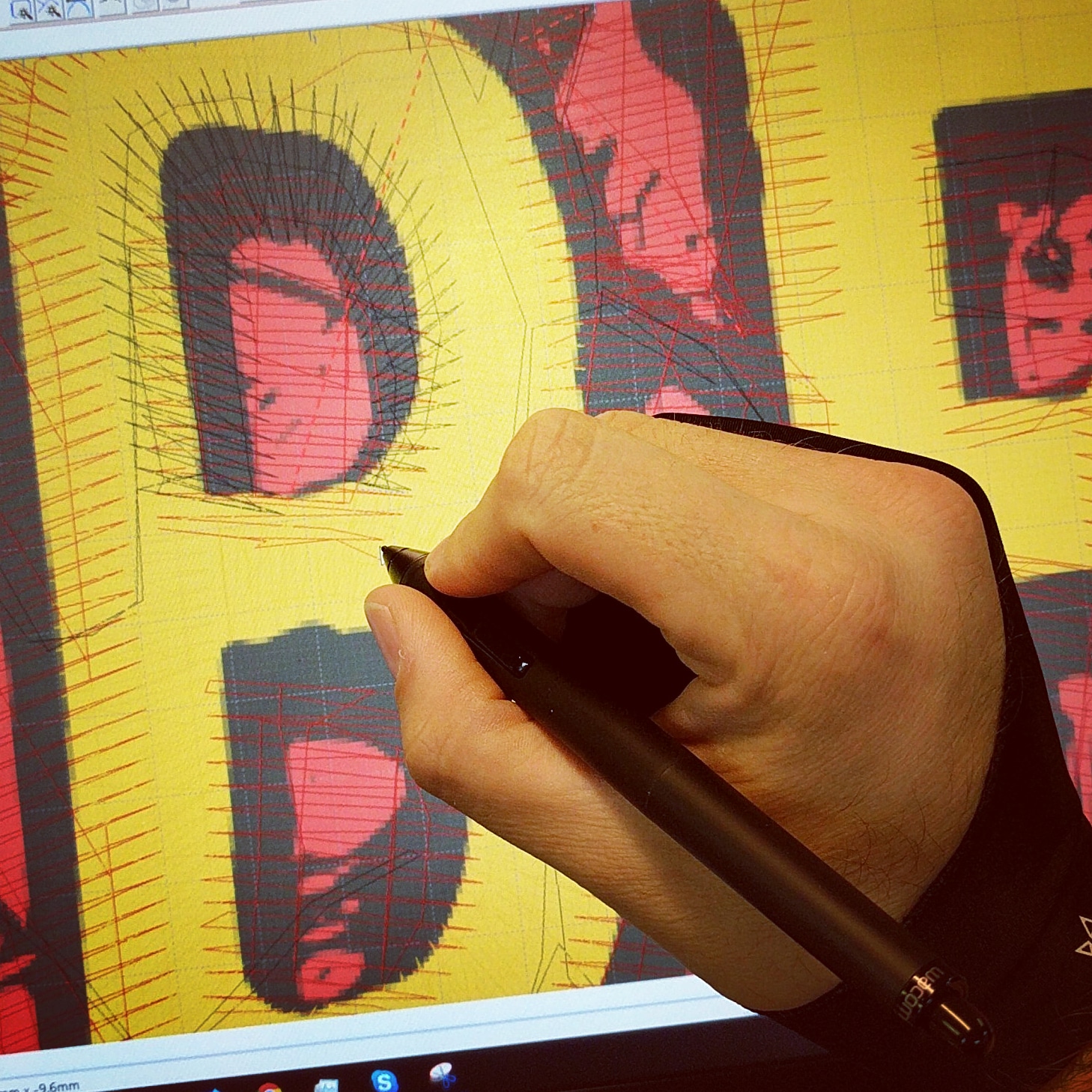Budget Friendly Digitizing for Embroidery: Precision and Detail
Wiki Article
Simplifying the Art of Needlework Digitizing: Step-by-Step Overview
As technology proceeds to breakthrough, the digitization process has actually ended up being much more obtainable, enabling fanatics to bring their intricate layouts to life with ease. In this guide, we will decipher the complexities of needlework digitizing, damaging down each action systematically to enhance the process and equip both novices and seasoned embroiderers alike.Comprehending Needlework Digitizing Software Application
Embroidery digitizing software program acts as an essential device for changing elaborate designs into digital styles suitable with needlework makers, facilitating precise sewing and modification. This specialized software application allows users to import various photo documents styles, such as JPG or PNG, and convert them right into embroidery machine-readable formats like DST, EXP, or PES - Digitizing for Embroidery. By using functions like stitch modifying, underlay choices, and thread shade choice, digitizing software program makes it possible for individuals to control every element of the design procedureIn addition, progressed embroidery digitizing software supplies devices for developing complex styles, readjusting stitch thickness, and incorporating intricate details. Individuals can also preview the style before stitching it out, guaranteeing accuracy and minimizing mistakes. In addition, lots of software application supply automatic features that assist simplify the digitizing process, saving effort and time.
Comprehending the abilities of needlework digitizing software is crucial for attaining top notch cause embroidery projects. By understanding this device, needlework fanatics and professionals can unleash their creativity and bring complex styles to life with precision and effectiveness.

Selecting the Right Layout Data
After acquainting yourself with the capabilities of embroidery digitizing software, the following vital action in the procedure is picking the appropriate layout apply for your task. Digitizing for Embroidery. When selecting a layout data for embroidery digitizing, it's necessary to think about the intricacy of the design, the size of the end product, and the sort of material you will certainly be collaborating withFor detailed styles with great information, a high-resolution image or vector file is recommended to make sure that the needlework equipment can accurately duplicate the style. Furthermore, the dimension of the end product plays a considerable role in selecting the right style data. Bigger layouts might call for greater resolution data to maintain quality and intensity.
Moreover, the type of material you will be embroidering on affects the option of design data. Various textiles might need adjustments in the design data to make sure that the stitches are properly aligned and the design looks like intended. By very carefully choosing the appropriate style file based upon these factors, you can set on your own up for a successful embroidery digitizing procedure.
Digitizing Devices and Techniques
Utilizing specialized software and precision methods, digitizing tools are crucial in changing read review intricate layouts into embroidery-ready data. Needlework digitizing software, such as Wilcom, Hatch, or Embrilliance, offers the essential platform to transform artwork right into stitch data. These programs provide functions like stitch editing, rug alternatives, and text devices to make sure the style translates effortlessly onto material.One of the vital methods in digitizing is creating a clear course for the needlework device to comply with. This entails digitizing each aspect of the style with precision, identifying stitch kinds, densities, and directions. By using devices like digitizing tablet computers or software-specific plugins, embroiderers can achieve a high level of precision in their digitized styles.
Moreover, understanding the art of underlay stitching is critical for generating high quality needlework. Underlay sewing maintains the textile and produces a foundation for the design, making sure that the end product is both aesthetically enticing and durable. By recognizing these digitizing tools and methods, embroiderers can elevate their craft and bring elaborate designs to life with accuracy and effectiveness.
Customizing Stitch Types and Directions
The option of stitch kinds can significantly affect the total appearance and appearance of the embroidered style. By tactically incorporating these stitch kinds, embroiderers can attain depth and measurement in their layouts.Additionally, the direction of stitches plays an essential role in enhancing the visual allure of the final needlework. Varying stitch directions can include appearance, highlight details aspects, and create aesthetic rate of interest. For example, transforming the angle of stitches can simulate movement or natural patterns like hair or feathers. By try out different stitch angles and patterns, embroiderers can bring their layouts to life with impressive information and complexity. Understanding the art of personalizing stitch types and instructions empowers embroiderers to release their creative thinking and elevate the quality of their work.
Screening and Refining Your Digitized Design
To make sure the precision and top quality of your digitized style, extensive testing and refinement are essential action in the embroidery digitizing process. Once you have actually completed the digitization of your style, it is vital to test it prior find this to waging the actual embroidery. Examining allows you to identify any potential problems such as thread breaks, sew density troubles, or style distortions that might impact the result.
After screening, it is essential to improve your digitized layout based on the feedback from the test sew-out. This might entail tweaking stitch setups, changing thickness, or making adjustments to the total design to accomplish the preferred end result. By repeating with screening and refinement, you can fine-tune your digitized style to perfection prior to moving ahead with the actual needlework procedure.
Final Thought
Finally, mastering the art of embroidery digitizing calls for a comprehensive understanding of the software program, selecting the ideal layout data, utilizing digitizing devices and techniques, customizing stitch types and instructions, and testing and improving the you can look here digitized design. By complying with these actions, embroiderers can streamline the digitizing procedure and develop high-grade stitched styles with precision and efficiency.Report this wiki page